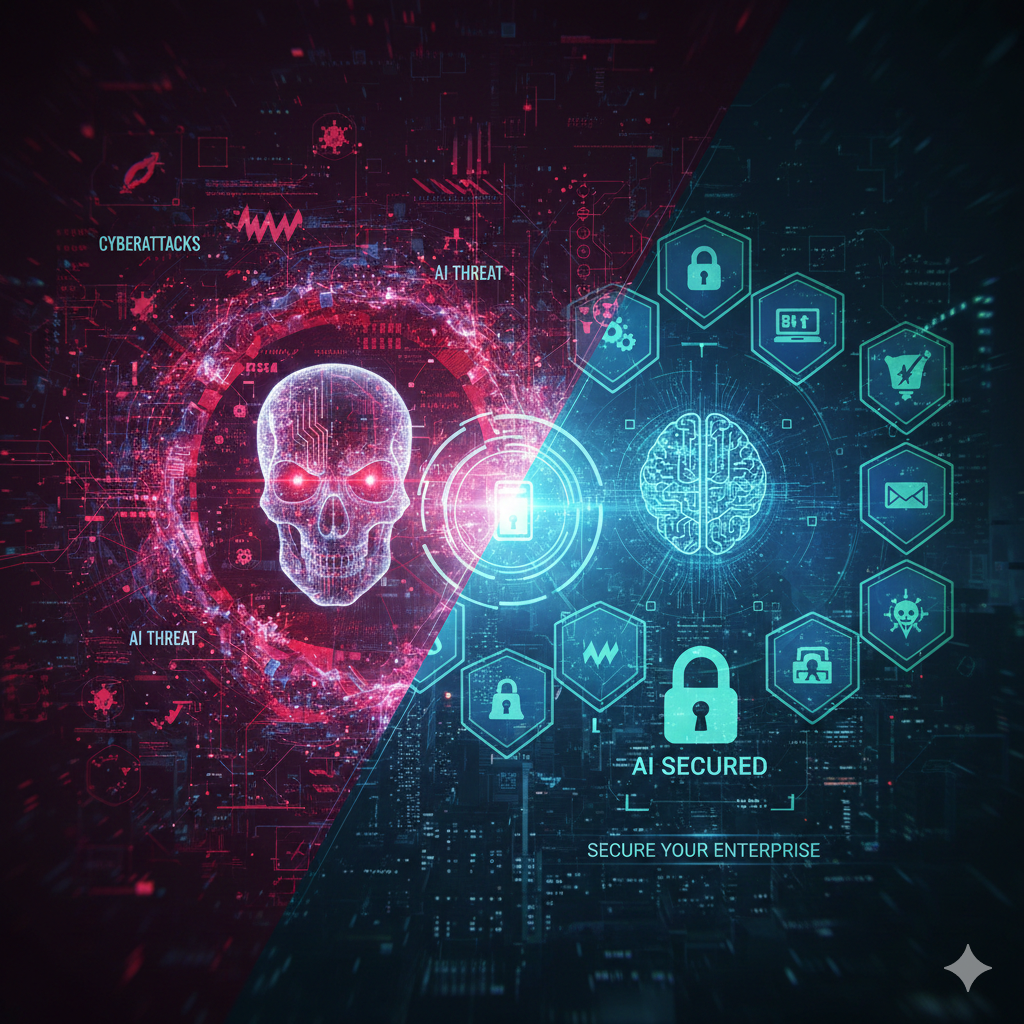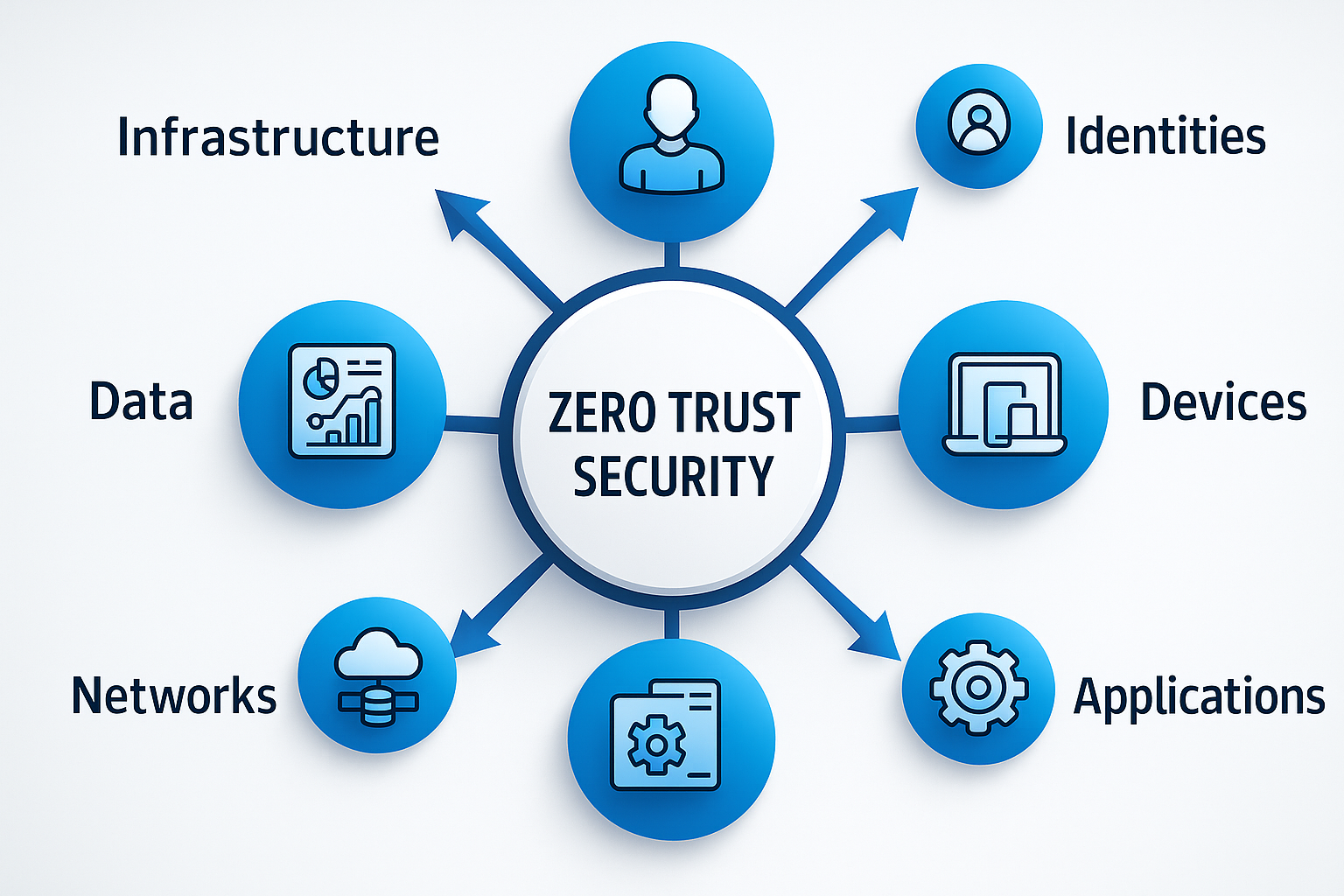As we step further into the digital transformation era, enterprises face increasing cyber threats that can disrupt operations, damage reputations, and cause financial losses. Traditional security measures are no longer enough to protect organizations from sophisticated cyberattacks, especially with the rise of Artificial Intelligence (AI) being used by cybercriminals to automate and scale their attacks.
The Changing Landscape of Cybersecurity
Cybersecurity has become a central concern for businesses, with the increased adoption of digital technologies making organizations more vulnerable. From ransomware attacks to data breaches, the threat landscape is expanding rapidly. The introduction of AI into cybercrime has changed the dynamics of traditional security systems, making it more difficult to detect and defend against these advanced threats.
AI, once reserved for enhancing business operations, is now being weaponized by cybercriminals to automate attacks, analyze patterns, and adapt quickly to bypass defenses. This means businesses need to rethink their approach to cybersecurity, adopting innovative technologies that can outpace these new threats.
The Power of AI in Cyber Defense
At NeuralXpert, we believe AI is the key to combating the rise of cyberattacks. By leveraging AI and Machine Learning (ML), organizations can predict, detect, and respond to threats in real-time, without relying solely on traditional, signature-based defenses.
Here are a few AI-driven cybersecurity solutions that are revolutionizing how businesses secure their networks:
-
AI-Powered Threat Detection
Traditional security solutions rely on known threat signatures. AI-powered systems, however, can analyze patterns across massive datasets and detect anomalies that could indicate an attack in progress. These systems continuously learn and adapt, becoming more effective over time. -
Automated Response Systems
Speed is critical when responding to cyber threats. AI-powered security solutions can automatically mitigate risks by isolating affected systems, blocking malicious traffic, or even patching vulnerabilities before the attack escalates. This level of automation significantly reduces the window of exposure and minimizes damage. -
Behavioral Analytics and User Authentication
AI systems can analyze user behavior patterns and detect deviations from the norm, which could signify potential insider threats or compromised accounts. By incorporating these systems into user authentication processes, businesses can ensure more robust security without sacrificing user experience.
The Role of Zero Trust Architecture (ZTA)
One of the most powerful concepts in modern cybersecurity is the Zero Trust Architecture (ZTA). This model assumes that no one, inside or outside the organization, is trusted by default. Every user and device must be continuously verified, authenticated, and authorized before granting access to systems, data, or applications.
ZTA is especially effective when combined with AI, as it allows security systems to quickly adapt and enforce the principle of least privilege, reducing the potential attack surface. By constantly evaluating trustworthiness and access levels, ZTA ensures that even if attackers breach one point of entry, they won’t have free access to the rest of the system.
Protecting Your Business in an AI-Driven World
Securing your business in today’s AI-driven landscape requires more than just deploying advanced technology. It requires a strategic approach to cybersecurity, integrating people, processes, and technology to build resilient defenses. Here’s how businesses can stay protected:
-
Invest in AI-Driven Security Solutions
Implementing AI-powered threat detection and response systems is crucial to identifying emerging threats early and preventing potential breaches. These systems should integrate seamlessly with your existing infrastructure and scale as your business grows. -
Train Employees on Security Best Practices
Employees remain one of the weakest links in cybersecurity. Providing ongoing training on recognizing phishing attempts, password management, and safe browsing habits can significantly reduce human errors that lead to cyberattacks. -
Regularly Test and Update Security Measures
With cyber threats evolving constantly, it’s essential to test and update your security measures regularly. Penetration testing, vulnerability scans, and security audits should be conducted frequently to identify weaknesses before attackers can exploit them. -
Implement a Zero Trust Strategy
A Zero Trust model, backed by AI, will help ensure that only verified users and devices are granted access to your systems. This helps minimize internal risks and prevents lateral movement within your network in the event of a breach. -
Leverage AI for Compliance and Reporting
AI can also help with regulatory compliance by automating tasks such as data tracking, reporting, and risk assessment. This not only ensures you remain compliant with industry standards but also reduces the manual effort involved in maintaining security logs.
Conclusion
The cybersecurity landscape is becoming increasingly complex, and businesses must adapt to stay protected. By embracing AI and cutting-edge technologies like Zero Trust Architecture, companies can proactively defend against cyber threats, reducing their risk of exposure and ensuring that their digital transformation journey remains secure.
At NeuralXpert, we specialize in creating AI-powered cybersecurity solutions that help businesses stay ahead of evolving threats. Contact us today to learn how we can help secure your organization against the next generation of cyberattacks.

